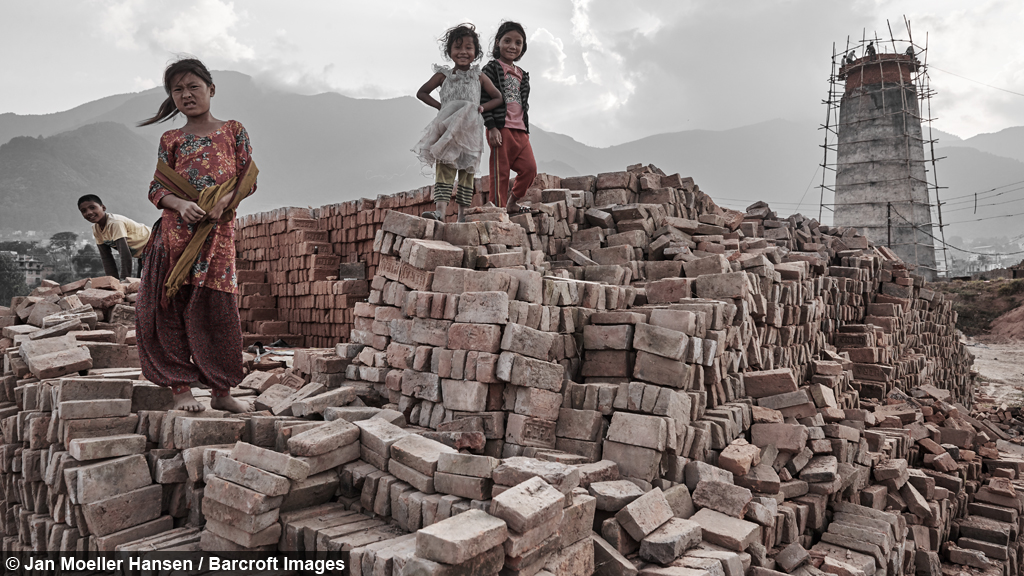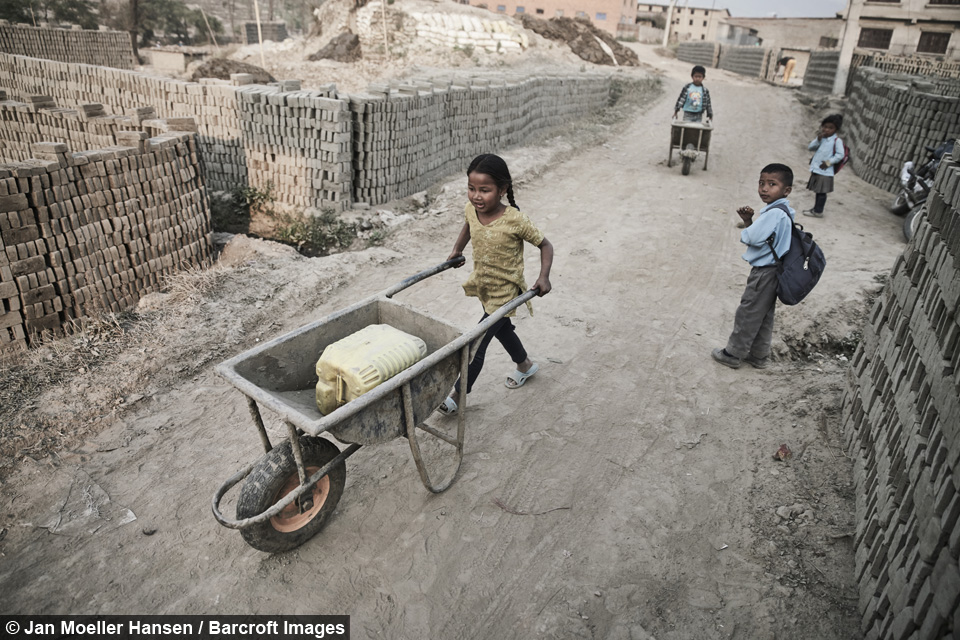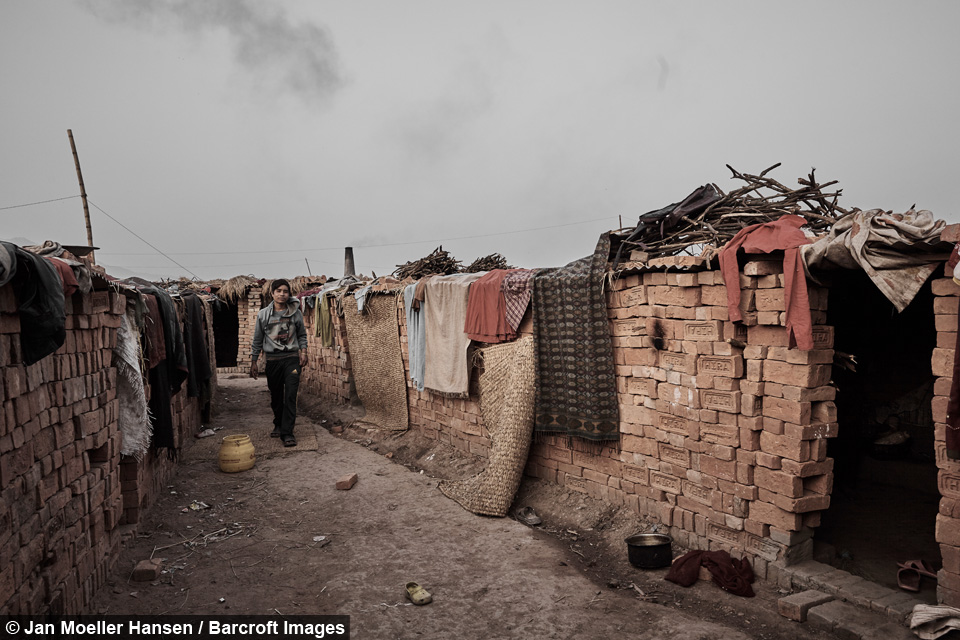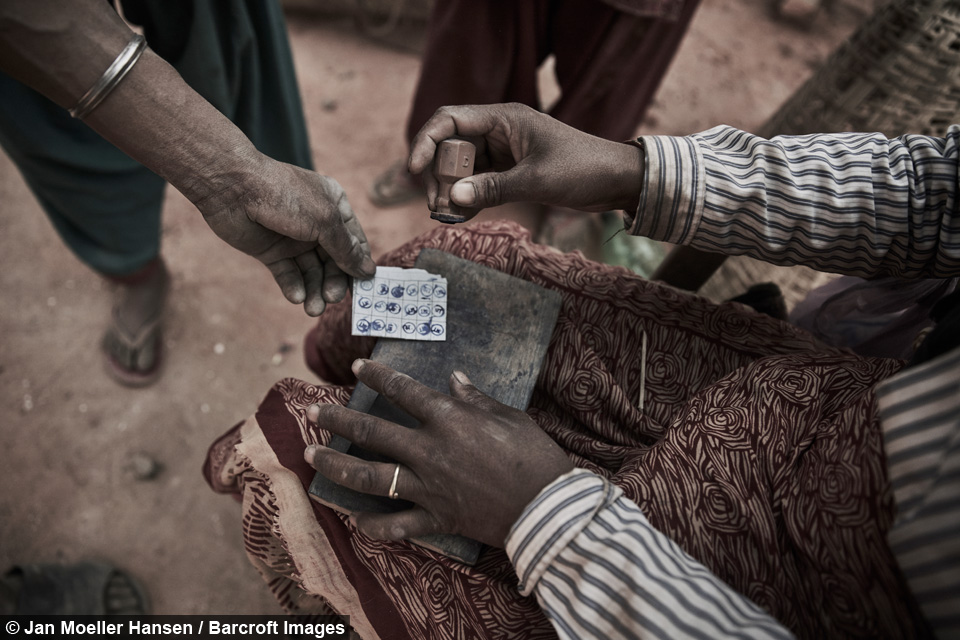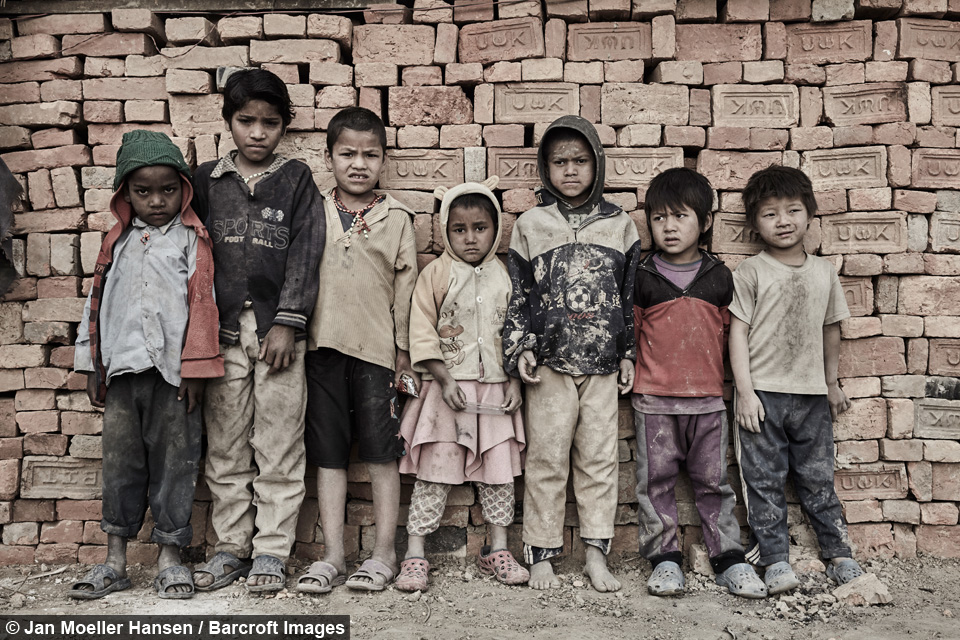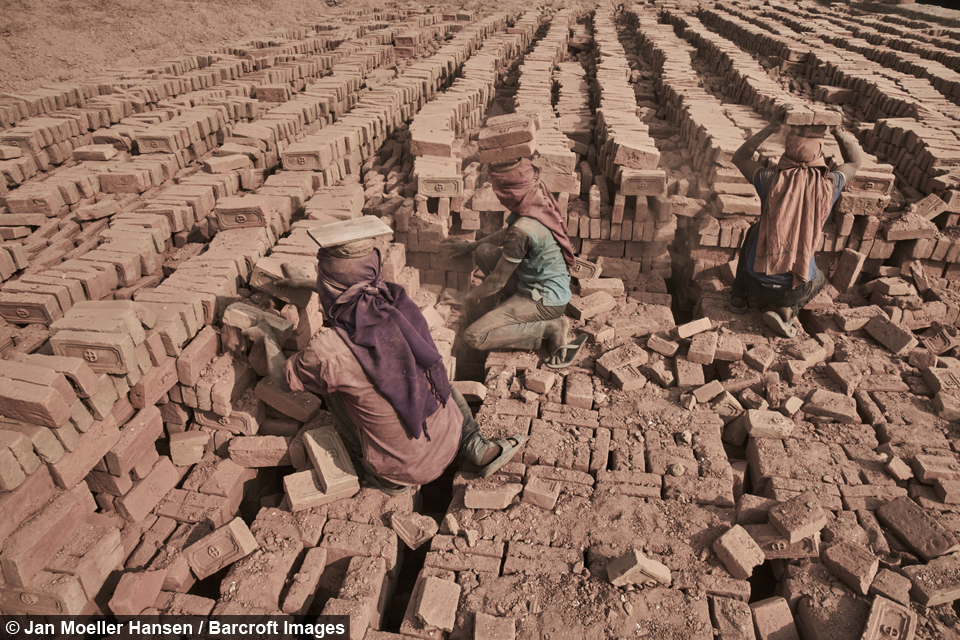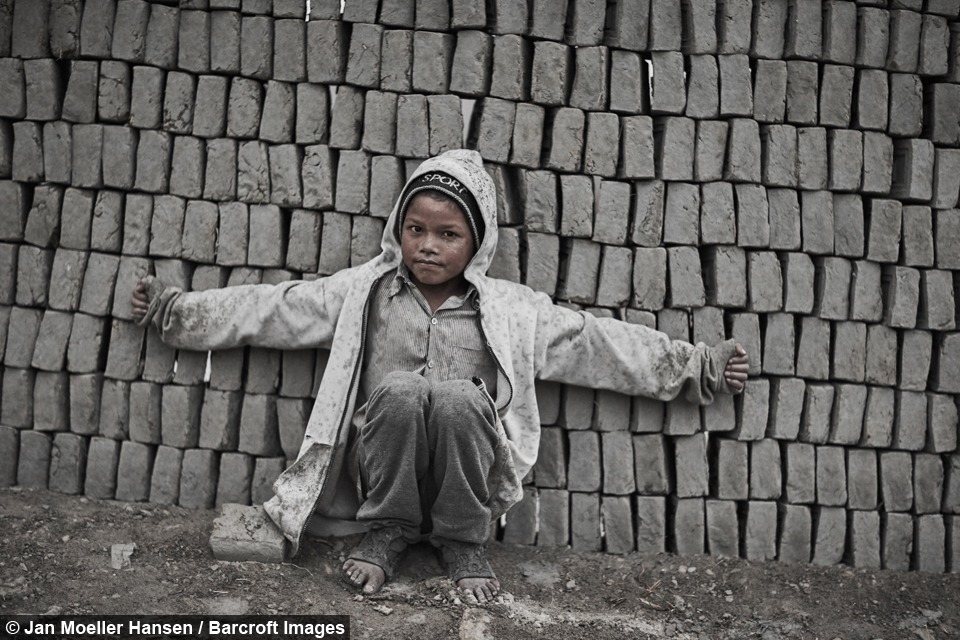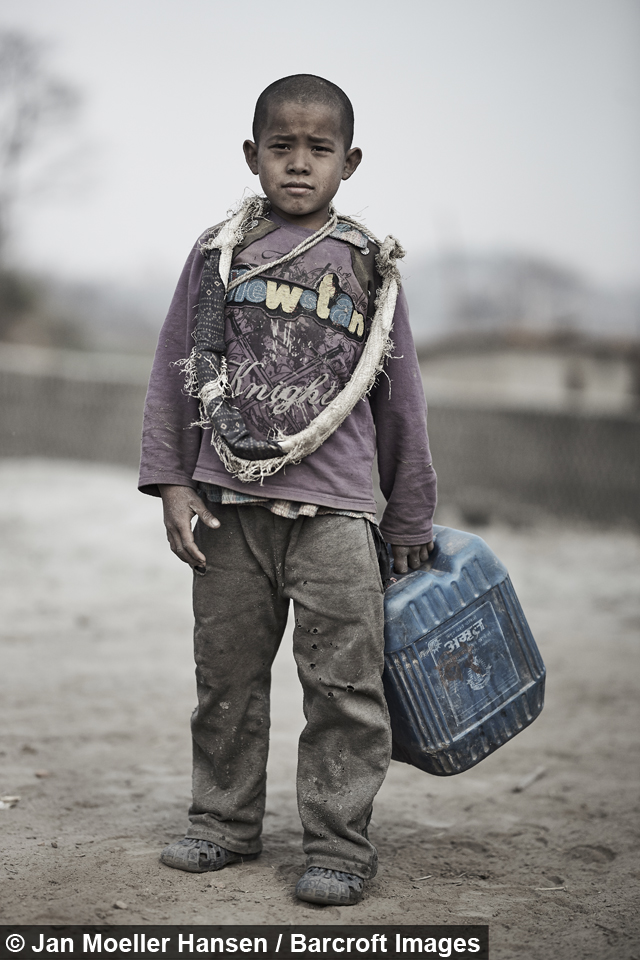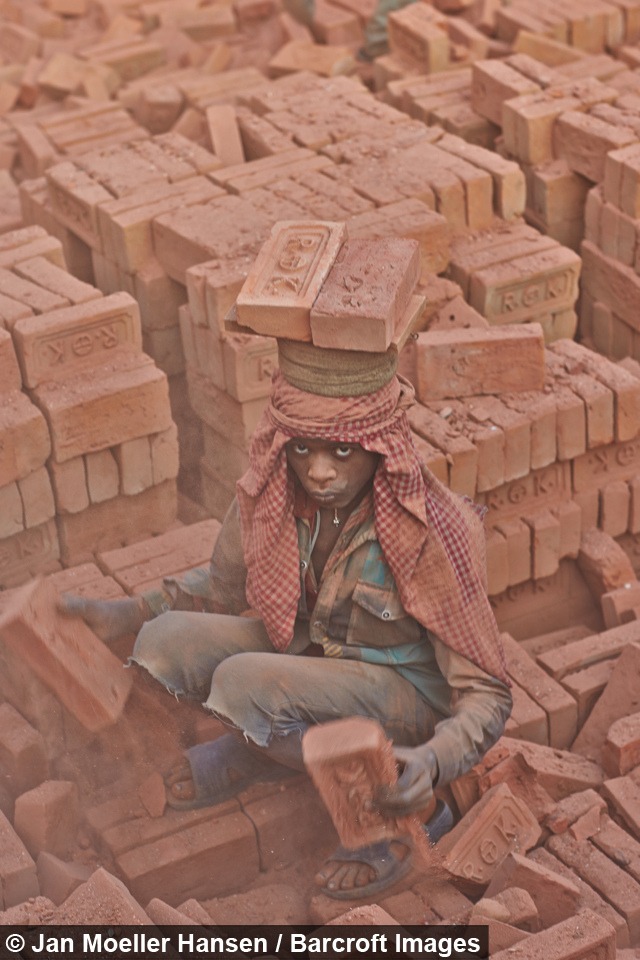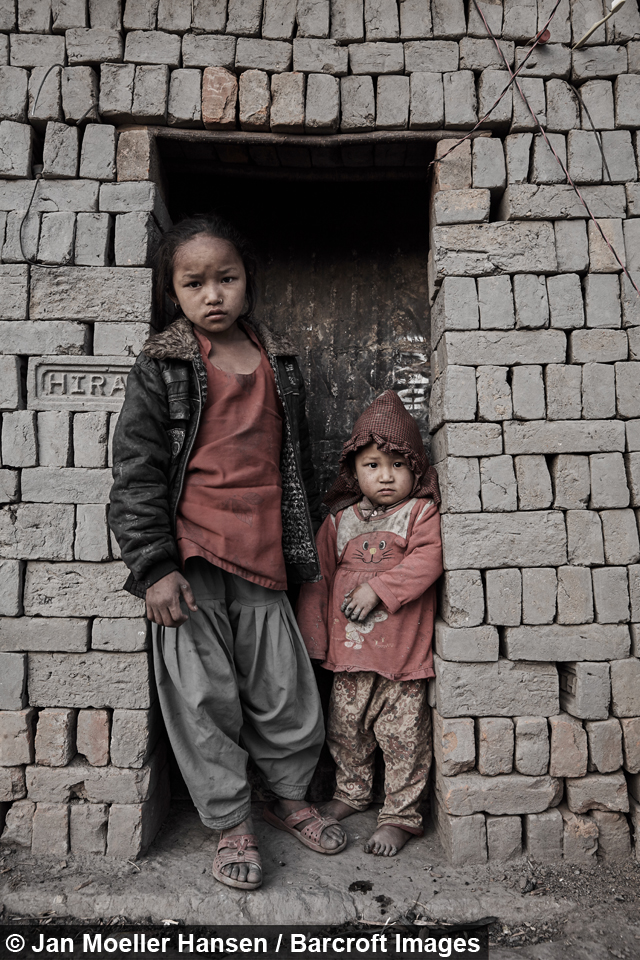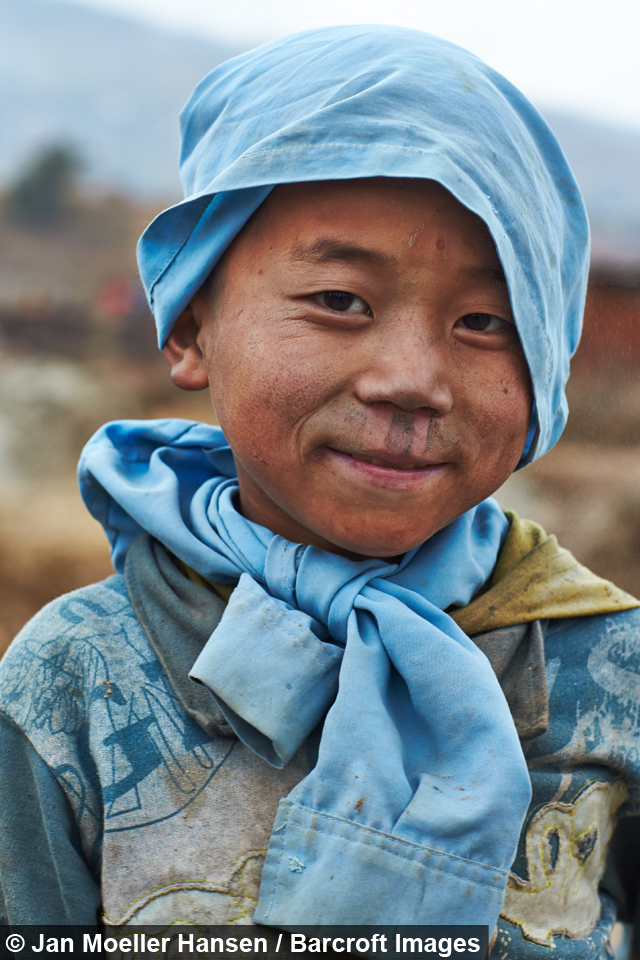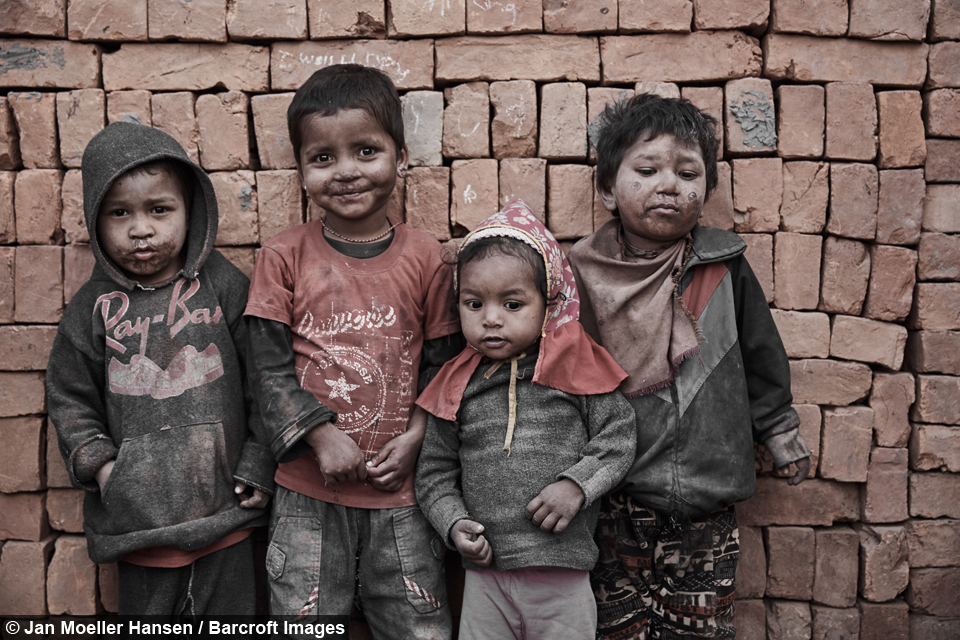Brick by Brick: Photographer captures the harsh lives of child labourers
By Hannah Stevens @Hannahshewans
Scroll down for the full story
Photographer Jan Moeller Hansen documented the conditions of the brick kilns in Kathmandu Valley, Nepal between 2013 and 2016 while he lived and worked in the area.
Jan estimates between 150,000 and 175,000 people are employed in brick kilns across Nepal. In the Kathmandu Valley alone there some 200 brick kilns employing thousands of workers.
The photographer said: “The workers are poor and often need to borrow money with really high interest rates.
“This ties them into a system of loans and debt with the brick kiln owners and forces them to work in the kilns for years. No monthly salaries are paid.
“Often the workers are enumerated at the end of the season, which means they have to stay on until the end of the season.
“A labourer earns a few dollars for a 12 to 14 hour working day. Sometimes the entire family is paid just one sum after the season.
“The children do not know what they earn since the father will get the payment for the work of the entire family.”
Workers spend the dry season between November and April working in the brick kilns, after the monsoon season and religious festivals of Dashawn and Tihar they return to live at the kilns for another lengthy season.
As Nepalese cities continue to grow and the nation struggles to recover from two earthquakes in 2015, the demand for bricks is higher than ever and kiln owners are capitalising on cheap labour to line their pockets.
According to Jan, the kiln workers are typically from the ethnic groups living in the surrounding hilly districts and plains of Nepal - workers range from 8 to 50-years-old.
Moeller said: “Some of the children, who have been assigned work in the brick kilns through middlemen, have also learnt to lie about their age. They will tell you that they are above 16 years of age, but it’s often a lie.
“I find it disturbing to see young women and children living and working under such conditions. Why can’t the authorities ensure that the brick industry starts to treat the workers in a fair and respectable manner?
“I also saw the mistreatment of donkeys - they also work hard and are not allowed to recover and are poorly fed.”
While the photographer understands the necessity of Nepal’s brick kilns, he hopes that his work will encourage more people to call for safer work conditions.
Although some kilns have been provided with more modern and less pollutive technologies, enforcement of regulations is sparse and the workers have little to no opportunity to voice their grievances.
For Jan the most shocking discovery of his trips into the kilns was the sheer number of children consigned to work in the harsh environment.
He said: “Many of the children come with their parents to live and work there. They have never had any other choice.
“Some of the children are also brought into the brick kilns by middlemen called naikes. The naikes trade the children with the brick kiln owners and get commission.
“It gives a bad perception of the society, authorities and the businessmen who are responsible for what’s going on. I am aware of the reasons why children work in the brick kilns but these explanations, as good as they might be, do not justify such practices.
“In the 21st century there ought to be no justification for child labour of this kind. It’s a very bad human practice. It’s a violation of human and child rights.”
